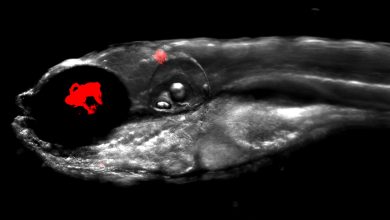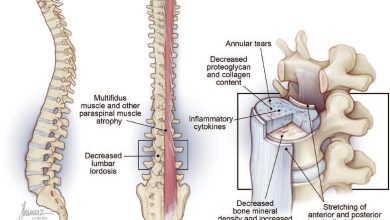
Certain proteins might provide clues to underlying biological mechanisms, say researchers.
People with mentally stimulating jobs have a lower risk of dementia in old age than those with non-stimulating jobs, finds a study published by The BMJ today (August 18, 2021).
One possible explanation is that mental stimulation is linked to lower levels of certain proteins that may prevent brain cells forming new connections (processes called axonogenesis and synaptogenesis).
Cognitive stimulation is assumed to prevent or postpone the onset of dementia. But trial results have varied and most recent long-term studies have suggested that leisure time cognitive activity does not reduce risk of dementia.
Exposure to cognitive stimulation at work typically lasts considerably longer than cognitively stimulating hobbies, yet work-based studies have also failed to produce compelling evidence of benefits.
So an international team of researchers set out to examine the association between cognitively stimulating work and subsequent risk of dementia and to identify protein pathways for this association.
Their findings are based on studies from the United Kingdom, Europe, and the United States looking at links between work-related factors and chronic diseases, disability, and mortality.
Three associations were examined: cognitive stimulation and dementia risk in 107,896 participants (42% men; average age 45 years) from seven studies from the IPD-Work consortium, a collaborative research project of 13 European cohort studies; cognitive stimulation and proteins in a random sample of 2,261 participants from one study; and proteins and dementia risk in 13,656 participants from two studies.
Cognitive stimulation at work was measured at the start of the study and participants were tracked for an average of 17 years to see if they developed dementia.
Cognitively stimulating “active” jobs include demanding tasks and high job decision latitude (also known as job control), while non-stimulating “passive” jobs are those with low demands and lack of job control.
After adjusting for potentially influential factors, including age, sex, educational attainment, and lifestyle, risk of dementia was found to be lower for participants with high compared with low cognitive stimulation at work (incidence 4.8 per 10,000 person-years in the high stimulation group and 7.3 in the low stimulation group).
This finding remained after further adjustments for a range of established dementia risk factors in childhood and adulthood, cardiometabolic diseases (diabetes, coronary heart disease, and stroke), and the competing risk of death.
The association did not differ between men and women or those younger and older than 60, but there was an indication that the association was stronger for Alzheimer’s disease than for other dementias.
Cognitive stimulation was also associated with lower levels of three proteins linked to both cognitive stimulation in adulthood and dementia, providing possible clues to underlying biological mechanisms.
This was an observational study, so can’t establish cause, and the researchers cannot rule out the possibility that some of the observed dementia risk may be due to other unmeasured factors.
However, this was a large, well-designed study that used different types of analyses to provide a certain degree of validation for the main findings, and the results seem to be generalizable across different populations.
As such, the researchers say their findings suggest that people with cognitively stimulating jobs have a lower risk of dementia in old age than those with non-stimulating jobs.
“The findings that cognitive stimulation is associated with lower levels of plasma proteins that potentially inhibit axonogenesis and synaptogenesis and increase the risk of dementia might provide clues to underlying biological mechanisms,” they conclude.
Despite considerable previous research, the role of work-related mental enrichment in dementia has remained unclear, says Serhiy Dekhtyar at the Karolinska Institutet, in a linked editorial.
“This new work is an important reminder to all in the specialty of dementia prevention that we can only go so far with intervention studies that are short, late, small, and include only people who are heterogeneous in their risk profiles to reveal any benefit of mental enrichment on dementia risk,” he writes.
“Carefully designed, large, population-based studies with long periods of follow-up that also aim to provide biological clues, can be an important addition to randomized controlled trials. Kivimäki and colleagues’ study is an outstanding example,” he concludes.
Although most of these risk markers may be only incidental byproducts of the slow disease process that leads to Alzheimer’s, the analysis pointed to high levels of one protein, SVEP1, as a likely causal contributor to that disease process.
In a further statistical analysis, the researchers compared the identified proteins with data from past studies of genetic links to Alzheimer’s. The comparison suggested strongly that one of the identified proteins, SVEP1, is not just an incidental marker of Alzheimer’s risk but is involved in triggering or driving the disease.
SVEP1 is a protein whose normal functions remain somewhat mysterious, although in a study published earlier this year it was linked to the thickened artery condition, atherosclerosis, which underlies heart attacks and strokes.
The researchers plan to continue using techniques like SomaScan to analyze proteins in banked blood samples from long-term studies to identify potential Alzheimer’s-triggering pathways—a potential strategy to suggest new approaches for Alzheimer’s treatments.
The scientists have also been studying how protein levels in the ARIC samples are linked to other diseases such as vascular (blood vessel-related) disease in the brain, heart and the kidney.
References:
“Cognitive stimulation in the workplace, plasma proteins, and risk of dementia: three analyses of population cohort studies” 18 August 2021, BMJ.
DOI: 10.1136/bmj.n1804
18 August 2021, BMJ.
DOI: 10.1136/bmj.n1973





